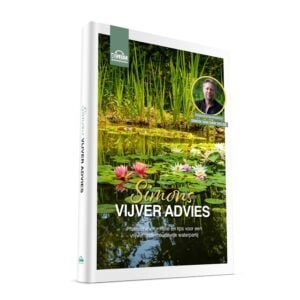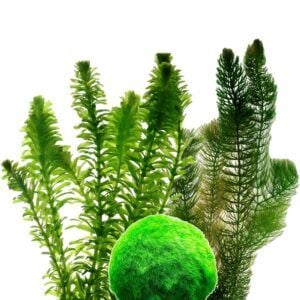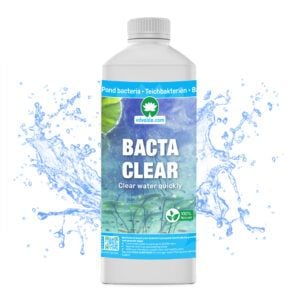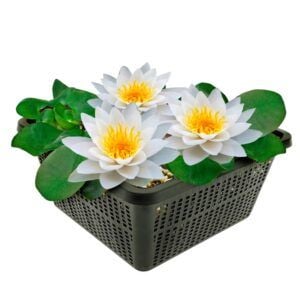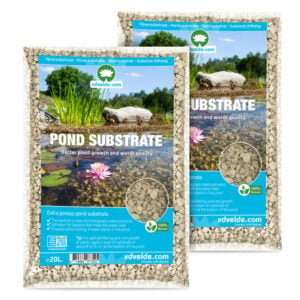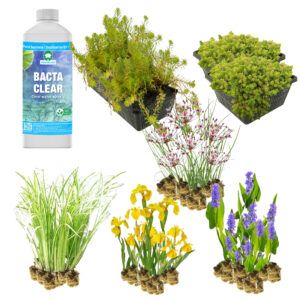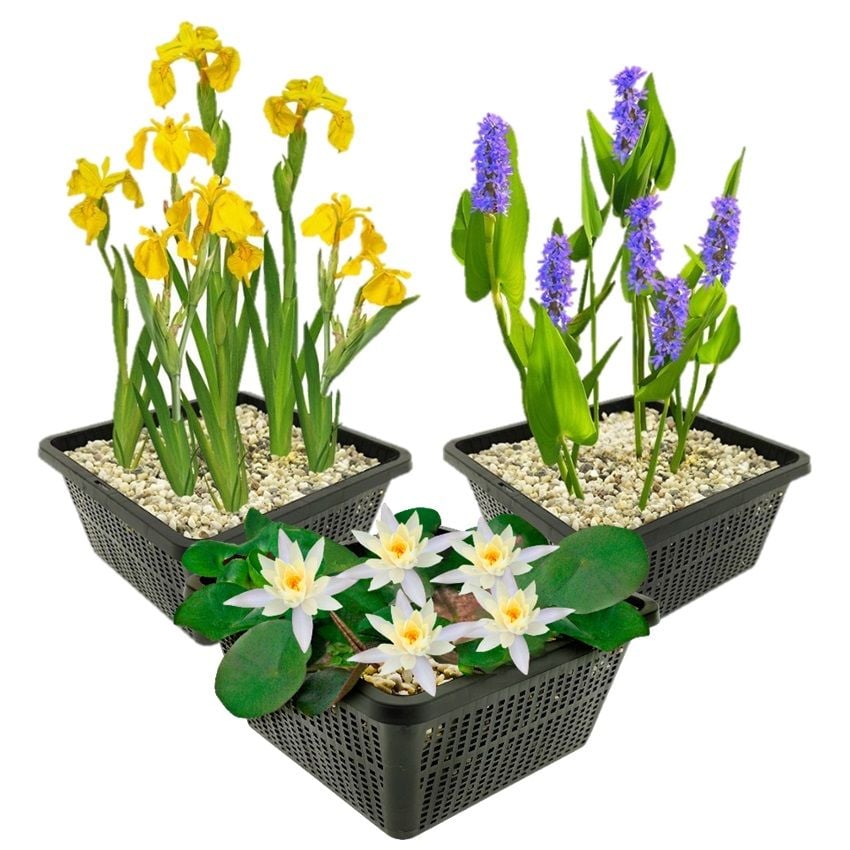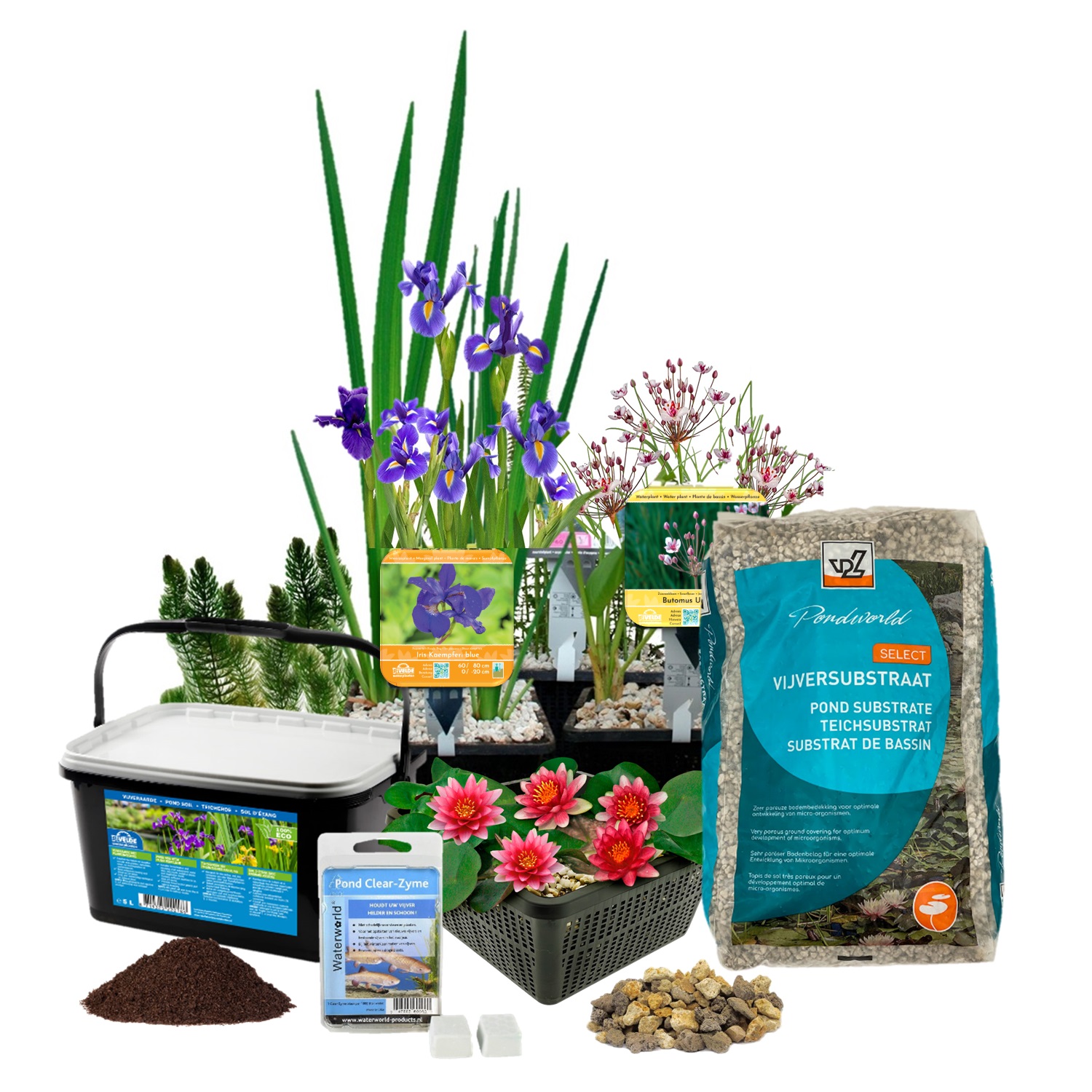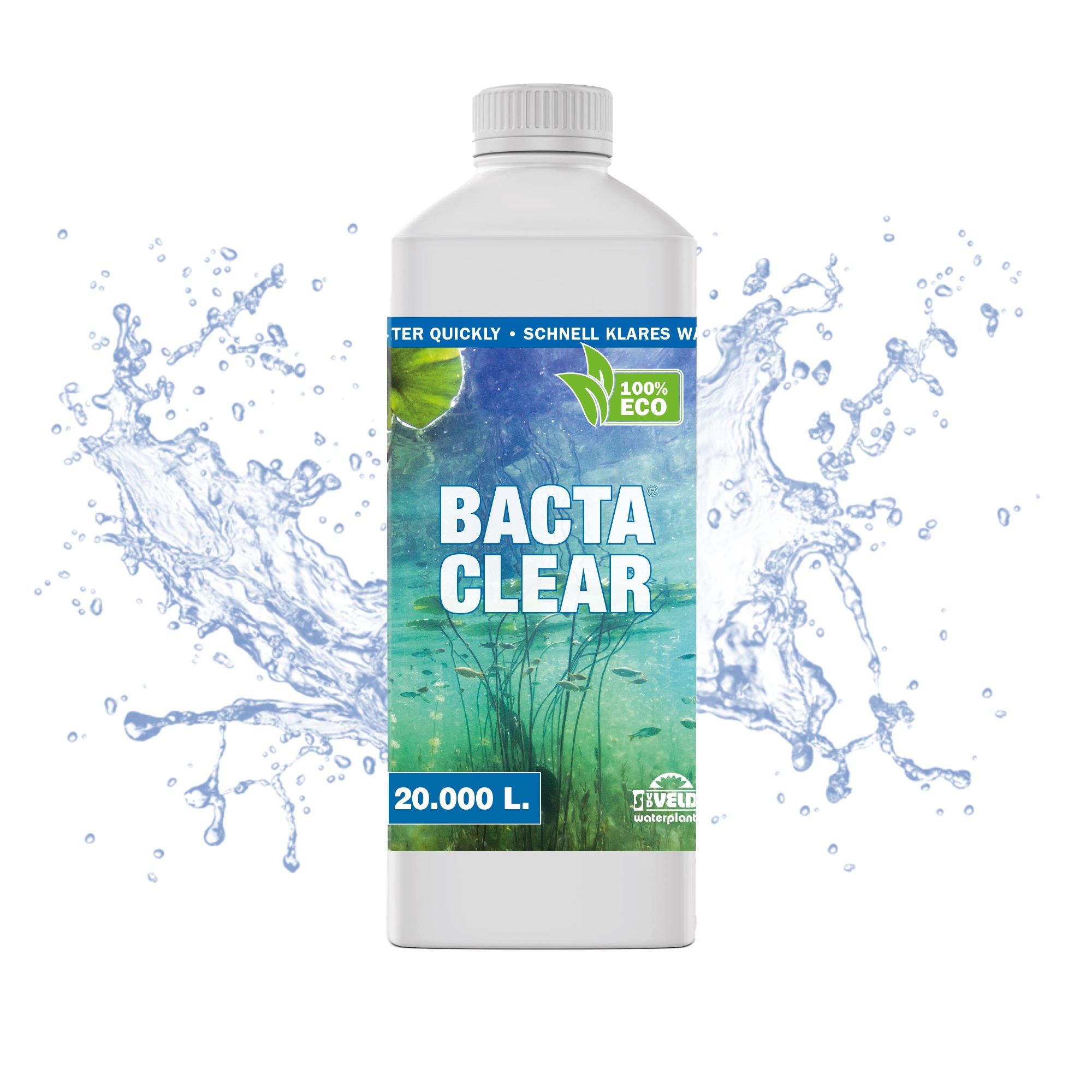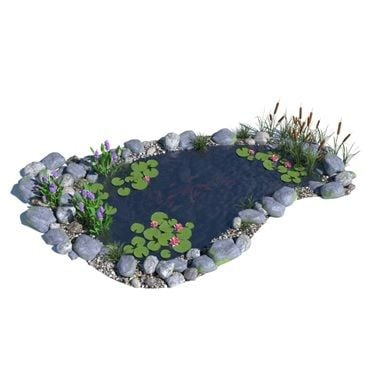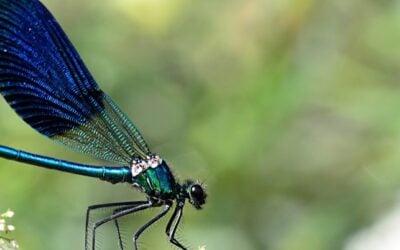
I hope you enjoy reading this blog.
Frogs, anura: From frogspawn to adult amphibians
Frogs, anura, like salamanders, belong to amphibians but the frog is the largest amphibian and there are nearly 7600 species.
All about frogs
Frogs are amphibians characterized by their distinctive frog sound and their ability to inhabit both water and land. This adaptive nature allows them to survive in a variety of habitats. They possess extended hind legs, ideal for jumping and swimming, and their skin contains glands that produce protective toxins. In addition, frogs play a crucial role in ecosystems: they are central to the food web and help control insect populations.
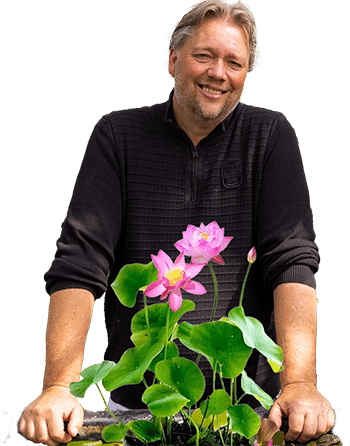
Tips, advice and substantial savings
The ideal pond for the frog in the Netherlands
The prototype of a perfect pond for the brown frog is a shallow, stagnant spring of clear water with an abundance of aquatic plants, especially riparian and oxygen plants. Ideally, the depth of this pond ranges up to a maximum of 120 cm, with an area between 5 and 10 square meters. A gradual drain of the pond is crucial so that frogs can enter and exit the water effortlessly. The pond ecosystem should be enriched with hiding places such as floating material, plants and stones, but it is not recommended to add pond fish, as they may consume the frogs' eggs and tadpoles. Ensuring these optimal living conditions will allow the brown frog to reproduce and thrive in the pond environment.
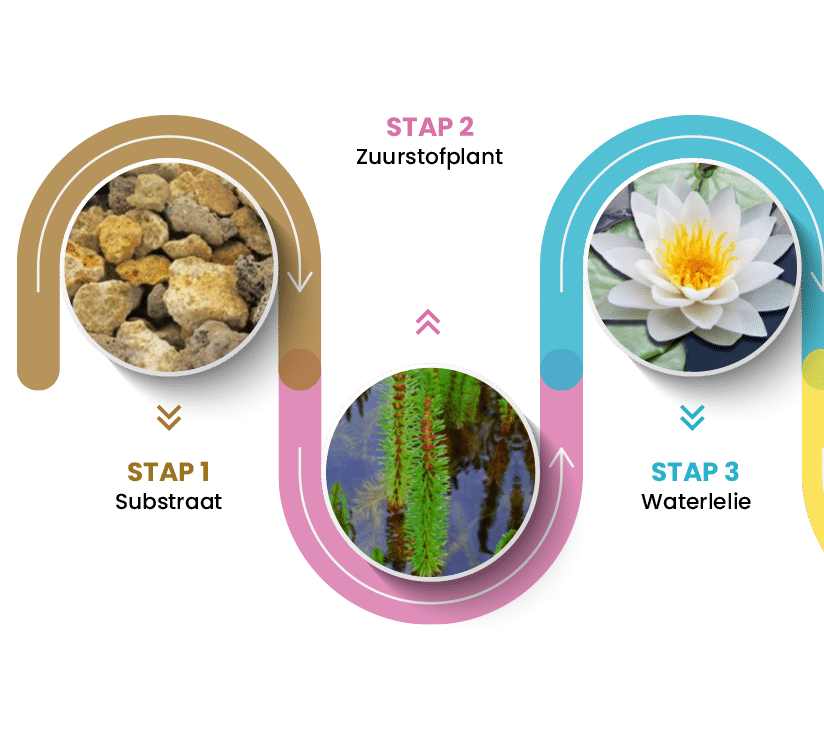
Want a naturally clear pond?
A beautiful pond is easier than you think.
How do frogs overwinter in the pond?
Frogs usually hibernate in the mud or at the bottom of ponds and ditches. To protect itself from the cold, the frog burrows into a muddy environment, which protects it from freezing and drying out. Pond plants can provide additional shelter in this regard. In preparation for winter, frogs reduce their food intake and build up fat reserves. During this period, some frogs may also change color slightly to a darker hue to better camouflage themselves in the soil. When water temperatures begin to drop, the frog looks for a suitable overwintering site and burrows in. During this hibernation period, the frog drastically slows its metabolism and heart rate, allowing it to survive with minimal energy. With the rise in water temperature in early spring, the frog awakens and resumes its normal life rhythm.
What is the difference between a frog and a toad?
Frogs and toads are both amphibians, but have some distinguishing characteristics. Frogs have smooth, moist skin, long hind legs, and live mainly in wetlands. They lay their eggs in jelly-like clumps that float. Toads have rougher skin, shorter legs and live more on land. Their eggs are deposited in long strings on the water bottom. In terms of sound, frogs make shrill sounds, while toads have a softer call.
What types of frogs are there?
There are numerous species of frogs worldwide, each with unique characteristics and habitats. Some of the most well-known frog species in the Netherlands are the Bastard Frog, Pool Frog, Lake Frog, Heath Frog and Tree Frog. These species vary in size, color and habitat, but all share the distinctive ability to live both on land and in water.
What do frogs eat?
Frogs feed mainly on insects such as worms and dragonflies. However, their diet varies by age, size and species. While young frogs prefer smaller insects, adult frogs often go for larger prey, sometimes even small amphibians such as salamanders.
What do tadpoles eat?
Tadpoles, the juvenile larvae of frogs, are a common sight in ponds, especially in spring. In their early life stage, they are primarily herbivorous, feeding on algae and plant matter. As they grow and develop, their diet becomes more diverse, switching to small aquatic animals, such as aquatic insects, worms and even small fish. It is important to have a natural balance in your pond so that these young amphibians can develop to their full potential.
Where do frogs like to sleep?
Frogs do not have a fixed sleeping pattern like mammals. Instead, they rest when needed. Frogs prefer moist, sheltered places to rest and sleep. This may be under leaves, in dense vegetation, among rocks or in other hiding places that provide protection from predators and the elements. In colder climates, frogs may hibernate during the winter months, buried in mud or under fallen leaves, where they remain until temperatures rise.
The brown frog
The brown frog is a fascinating creature, with unique characteristics that set it apart from other frog species. As its name suggests, the brown frog has predominantly brown tones. These can range from yellowish brown to reddish brown and even grayish brown. On top of this basic color, the brown frog has dark spots and a light-colored belly, which helps with camouflage in their natural habitat. Compared to other frogs, such as the green frog, the brown frog has a wide and blunt mouth. Its eyes are set far apart, giving it a distinctive appearance. The brown frog has an average length of 7-9 centimeters, but it is not uncommon to encounter larger specimens. Surprisingly, it is often the females that grow larger than the males, sometimes reaching an impressive 11 centimeters. Although the brown frog may not have the most striking colors or exotic patterns seen in some other amphibians, its modest appearance and adaptive characteristics make it a fascinating subject of study for naturalists and biologists. This frog, with its varying shades of brown and wide, blunt mouth, is truly a wonderful example of the diversity within the amphibian family.
The green frog
The green frog is a striking sight in many wetland habitats. The green frog gets its name from its dominant, shiny green skin. However, as the name may not suggest, the color of this frog can vary. They can exhibit shades from yellow to brown, often embellished with dark spots or stripes on their backs. This color palette serves as excellent camouflage in their natural habitat. Characteristic of the green frog are the large eyes that are placed on the side of their heads. This gives them a panoramic field of vision, which is especially useful for both spotting prey and noticing predators in a timely manner. The green frog's long, powerful hind legs are ideal for jumping, both in water and on land. In addition, their fingers are equipped with suction cups, which helps them climb on wet and slippery surfaces. With an average length of 11-12 centimeters, green frogs often surpass their brown counterparts in size, making them one of the larger frog species you may encounter in some regions. Thanks to these characteristics and their adaptability, the green frog is a popular subject for naturalists and scientists alike. Studying their color patterns, behavior and life cycle offers fascinating insight into the wonderful world of amphibians.
From frogspawn to frog
The time it takes for tadpoles to completely change into frogs varies, depending on the species of frog and environmental conditions. In general, however, tadpoles go through a process called metamorphosis, in which they gradually change into adult frogs.
On average, the process from tadpole to frog takes about 12 weeks. However, this can vary depending on factors such as the species of frog, water temperature and food availability.
During metamorphosis, tadpoles undergo several physical changes. They develop legs, their tails begin to disappear and they undergo internal changes such as the development of lungs to allow them to breathe instead of breathing through gills.
It is important to note that not all tadpoles have the opportunity to become frogs. Many tadpoles are eaten by predators before they reach adulthood. The survival rate of tadpoles varies greatly depending on various environmental factors.
Tadpole care
It is most successful to first place tadpoles in a breeding tank or aquarium filled with ditch water. Once the tadpoles have hatched they must be fed. Tadpoles feed mainly on algae naturally occurring in the (fresh) ditch water. To ensure that the tadpoles get sufficient nutrition, you should regularly change the water in the breeding tank with fresh ditch water from the same ditch. In addition, you can feed small pieces of lettuce, endive or dandelion to the tadpoles as supplemental food. When the tadpoles grow legs, they also develop lungs. They have now transformed into amphibians. This means that in the breeding tank or aquarium there must also be a way for the frog to climb out of the water, otherwise the frog will drown. Consider, for example, a piece of wood, rock or cork that sticks out of the water. When the frogs are fully grown, after about seven weeks, they can be released into the pond.
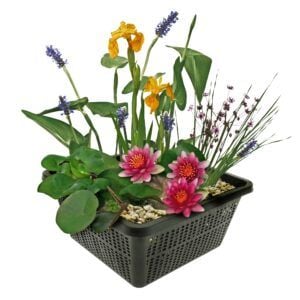

Simon van der Velde
Pond specialist and aquatic plant grower since 1986

Want to receive the best pond tips all year long, complete with exclusive promotions?
Simons Pond Advice Book
- Choose your language of the book
- Complete pond handbook
- 100+ pages from construction to maintenance
Loose Oxygen Plants Set
- For 500 - 1,000 liters of water
- 16 plants
- Placement: loose in the water
BACTA CLEAR
- For 1,000 to 20,000 L
- 100% eco: clear water fast
- Safe for humans, plants & animals
White Water Lily - Nymphaea Albatross
- Large water lily
- Full-grown height: 10 cm
- Placement: -10 to -100 cm
Complete Pond Package - Small - Red
- For 100 - 500 L
- 19 plants + extras
- Placement: -1 to -100 cm
POND SUBSTRATE Pond substrate - 40 liters
- 40 L covers 1 m² ↥ 10 cm
- Heavy duty quality for the best filtration
- Extra porous: optimal plant growth
Mini Water Lily - Red - Nymphaea Pygmaea Rubra
- Small water lily
- Full-grown height: 5 cm
- Placement: -10 to -40 cm
Complete Pond Package - Medium
- For 500 - 1.500 L
- 36 plants + extras
- Placement: -1 to -100 cm
Complete Plant Filter Pond Package - M
- For 3 - 4 m²
- 84 plants
- Placement: -1 to -20 cm


